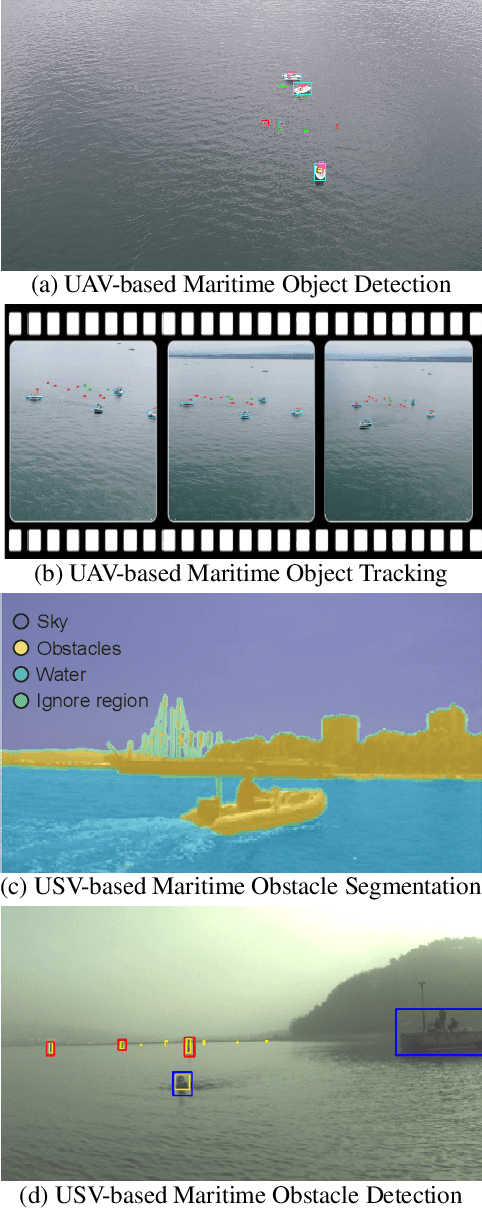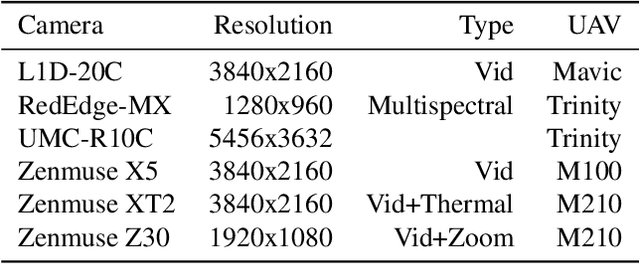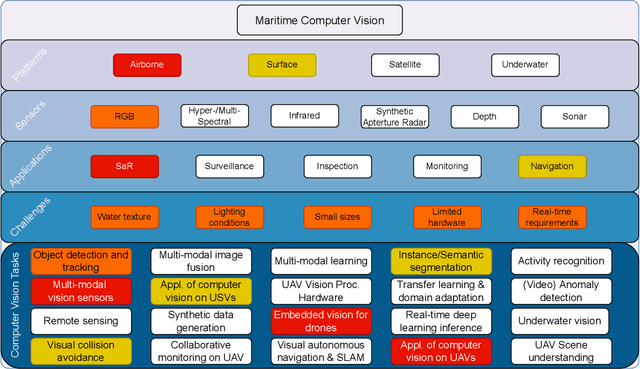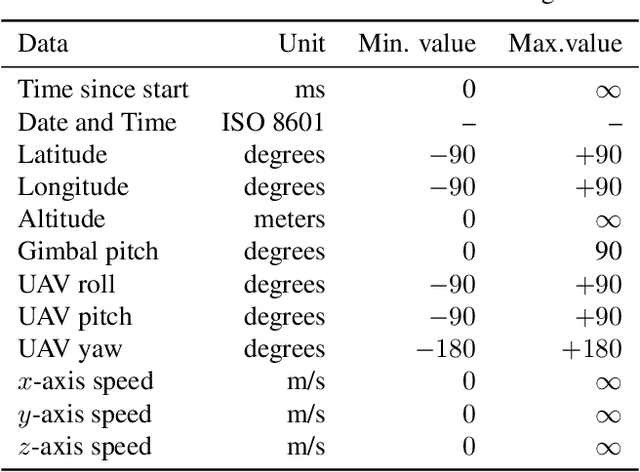Yitong Quan
3rd Workshop on Maritime Computer Vision (MaCVi) 2025: Challenge Results
Jan 17, 2025Abstract:The 3rd Workshop on Maritime Computer Vision (MaCVi) 2025 addresses maritime computer vision for Unmanned Surface Vehicles (USV) and underwater. This report offers a comprehensive overview of the findings from the challenges. We provide both statistical and qualitative analyses, evaluating trends from over 700 submissions. All datasets, evaluation code, and the leaderboard are available to the public at https://macvi.org/workshop/macvi25.
Approximate Supervised Object Distance Estimation on Unmanned Surface Vehicles
Jan 09, 2025Abstract:Unmanned surface vehicles (USVs) and boats are increasingly important in maritime operations, yet their deployment is limited due to costly sensors and complexity. LiDAR, radar, and depth cameras are either costly, yield sparse point clouds or are noisy, and require extensive calibration. Here, we introduce a novel approach for approximate distance estimation in USVs using supervised object detection. We collected a dataset comprising images with manually annotated bounding boxes and corresponding distance measurements. Leveraging this data, we propose a specialized branch of an object detection model, not only to detect objects but also to predict their distances from the USV. This method offers a cost-efficient and intuitive alternative to conventional distance measurement techniques, aligning more closely with human estimation capabilities. We demonstrate its application in a marine assistance system that alerts operators to nearby objects such as boats, buoys, or other waterborne hazards.
Memory Maps for Video Object Detection and Tracking on UAVs
Mar 06, 2023Abstract:This paper introduces a novel approach to video object detection detection and tracking on Unmanned Aerial Vehicles (UAVs). By incorporating metadata, the proposed approach creates a memory map of object locations in actual world coordinates, providing a more robust and interpretable representation of object locations in both, image space and the real world. We use this representation to boost confidences, resulting in improved performance for several temporal computer vision tasks, such as video object detection, short and long-term single and multi-object tracking, and video anomaly detection. These findings confirm the benefits of metadata in enhancing the capabilities of UAVs in the field of temporal computer vision and pave the way for further advancements in this area.
1st Workshop on Maritime Computer Vision 2023: Challenge Results
Nov 28, 2022



Abstract:The 1$^{\text{st}}$ Workshop on Maritime Computer Vision (MaCVi) 2023 focused on maritime computer vision for Unmanned Aerial Vehicles (UAV) and Unmanned Surface Vehicle (USV), and organized several subchallenges in this domain: (i) UAV-based Maritime Object Detection, (ii) UAV-based Maritime Object Tracking, (iii) USV-based Maritime Obstacle Segmentation and (iv) USV-based Maritime Obstacle Detection. The subchallenges were based on the SeaDronesSee and MODS benchmarks. This report summarizes the main findings of the individual subchallenges and introduces a new benchmark, called SeaDronesSee Object Detection v2, which extends the previous benchmark by including more classes and footage. We provide statistical and qualitative analyses, and assess trends in the best-performing methodologies of over 130 submissions. The methods are summarized in the appendix. The datasets, evaluation code and the leaderboard are publicly available at https://seadronessee.cs.uni-tuebingen.de/macvi.
 Add to Chrome
Add to Chrome Add to Firefox
Add to Firefox Add to Edge
Add to Edge